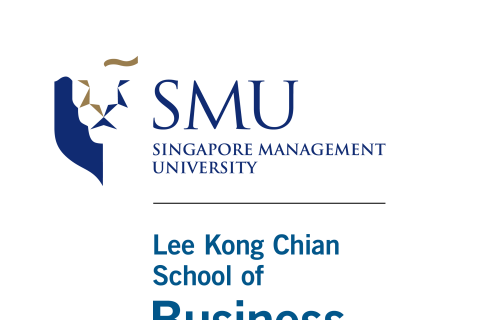
Innovation is an important driver for increasing a firms profit margins. However, short-term expenses in the innovation process, with a short product life cycle common among highly innovative leaps, makes it very difficult to predict demand. This can make investors wary.
Dr. Sterling Huang and colleagues look into how the balance between a company and its investors can shift with successful innovations, and the changes that it has on the company’s internal communication and management.
Read the original paper: https://doi.org/10.2308/tar-2017-0082
Transcript:
Hello and welcome to Research Pod. Thank you for listening and joining us today.
In this episode we are exploring research in innovation conducted by Dr Sterling Huang, Associate Professor of Accounting at Singapore Management University, and colleagues. Their research looks into how the balance between a company and its investors can shift with successful innovations, and the changes that it has on the company’s internal communication and management. The team aims to understand if success, measured in terms of patent grants, drives firms to make more voluntary management forecasts.
It is widely accepted that innovation can be an important driver for the increase of firms’ profit margins. However, the high degree of innovation of a product associated with its typically short life cycle makes it very difficult to predict demand.
To make matters worse, a company is likely to incur in heavy short-term expenses in the innovation process, such as those related to patent development or licensing. In this scenario, it makes sense for investors to request additional forward-looking financial statements, such as expected earnings from capital market participants, to make informed business decisions.
Previous studies in this area have found that the stock market does not take lessons from the past into consideration in the valuation of innovations. Additionally, it is necessary to consider the role of disclosure theory, which consists in the provision of information by a company’s management beyond the mandatory requirements.
In the context of innovation, it teaches us that managers are incentivised to make voluntary disclosures when uncertainty and information asymmetry, that is when a business party possesses more information than the other party they are dealing with, are at stake, in order to align their expectations with the expectations of investors.
Nevertheless, these disclosures can do more than just balance information within a company – there’s always the risk of information falling in the hands of competitors, and the additional cost of securing information to stop that from happening.
In their research, Dr. Huang and his colleagues have turned their attention to patent grants as an indicator of innovation success. It is important to highlight that the firm’s innovation success was measured in terms of patent grants, which are subject to certain legal protections. Although a patent grant is a stronger measure of innovation success than input-based measures, such as R&D expenditure, a certain degree of variation is expected between patent activity and voluntary disclosure due to the level of legal protection or enforcement. These factors may vary according to the country or industry the firm is part of.
When considering patenting, two aspects are pivotal. On one hand, the owner of an invention is granted with a right that restricts others from making, using, importing, or selling the innovation without previous consent. On the other hand, the owners of an invention are obliged to provide detailed public information about what exactly is being patented. This kind of disclosure can attract attention, and influence the patent’s future financial outcome.
By measuring the number of patents and citations in order to evaluate the innovation success of companies, this research indicates a causal relationship between successful innovation and subsequent voluntary disclosure.
More specifically, the study found that innovation success, both from a quantitative and qualitative perspective, leads to an increase in more management guidance. The results are robust to controlling for an array of firm-, CEO-, and board-level characteristics, and to including firm or industry, year, and CEO fixed effects.
Hand in hand with successful innovation is the investors demand for voluntary disclosure. This demand increases as investors are very keen to learn about the innovation’s short- and long-term financial implications.
Although there is a lot of research examining the determinants of firm-level innovation, not that many consider its consequences. Therefore, Huang and colleagues analysed a large sample that allowed them to study management forecasts, which are an important form of voluntary corporate disclosure, and to perform further analyses that contributed to clarify about the necessary conditions for innovation success to lead to more voluntary disclosure.
Huang and colleagues found that, in cases where investors demand voluntary disclosure, there is positive relationship between innovation and management forecasts. This means that a high degree of innovation results on in more forward-looking analyses being shared. These results get stronger as the number of investors of the firms increase, confirming that, similarly to previous research, institutional investors are better positioned to demand and elicit voluntary disclosure from management.
It is also important to take into consideration that the positive link between innovation and management forecasts is incrementally stronger after the Regulation Fair Disclosure period. Also known as post-Reg FD, the Regulation Fair Disclosure is a regulation that was introduced by the U.S. Securities and Exchange Commission in August 2000 and, in short, generally prohibits public companies from disclosing previously non-public, material information to certain parties unless the information is distributed to the public first or simultaneously, so as to prevent insider trading.
The researchers also analysed if competition had an impact whether more disclosure was likely following innovation success, as they expected companies facing a high level of competition to be less willing to share this type of information, so as to keep their edge and keep down proprietary cost concerns. Using industry concentration, that is, the degree at which a small number of firms make up for the total production in the market, as a measure, those expectations were confirmed: the positive relationship between patent grants and management guidance is weaker for firms with more competitors.
Following a patent grant, the study results demonstrate that incentive to share management forecasting increases. This suggests that, on average terms, and on the analysed context, the benefits of additional disclosure are perceived to outweigh the costs.
The authors note that following a patent grant, a short-term increase in information asymmetry can be identified – innovators have information that their investors don’t, and their competition will soon seek out. In an attempt to overcome this hurdle, firms’ issue more management forecasts. Furthermore, evidence suggestive of reduced information asymmetry for firms that disclose more information following innovation success was found.
This research adds to previous studies on corporate disclosure in general and to the identified tendency that the issue of management forecasts increases with investors’ information demand and decreases with higher disclosure costs, such as proprietary costs. However, this study distinguishes itself from others on the subject as it states that in the presence of innovation, both information demand and proprietary costs are high. Huang and colleagues research here documents how the benefits and costs of disclosure can together shape management guidance decisions.
Overall, the research findings reveal that innovation generates a higher demand for additional voluntary disclosure. Huang and colleagues’ findings also suggest that that companies’ disclosure decisions in the sequence of innovation outcomes vary in ways that disclosure theory and economic intuition predict.
Thanks very much for listening. Don’t forget to check out the links to the original research papers, linked in the notes for this episode, and stay subscribed to ResearchPod for all the latest in research news. See you again soon.
Also published on https://researchpod.org/business/do-innovative-firms-communicate-more
Podcast is also available on Spotify, Apple iTunes, Google Podcasts, and many more (please use search term “ResearchPod”).
See More News
Want to see more of SMU Research?
Sign up for Research@SMU e-newslettter to know more about our research and research-related events!
If you would like to remove yourself from all our mailing list, please visit https://eservices.smu.edu.sg/internet/DNC/Default.aspx

